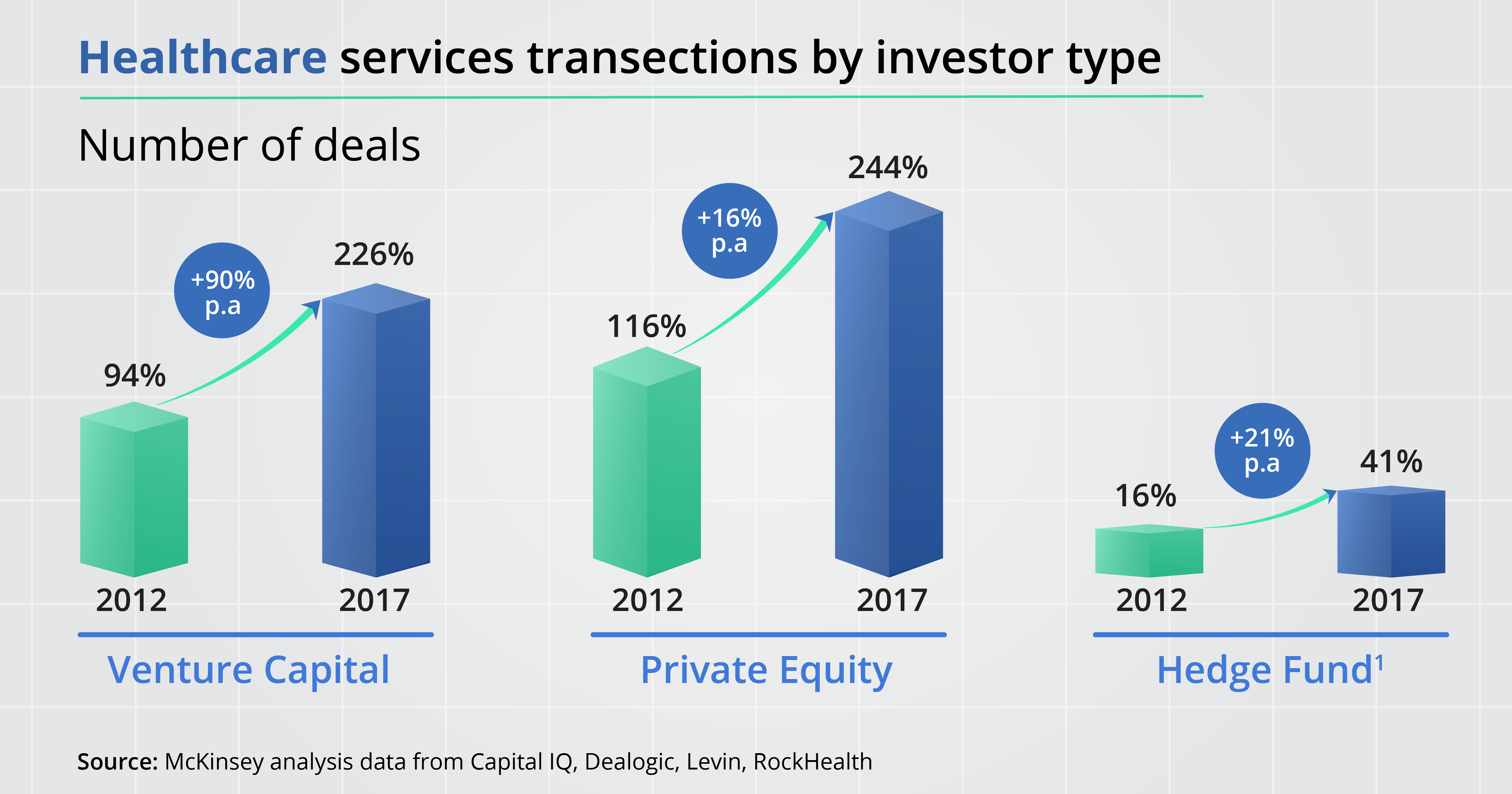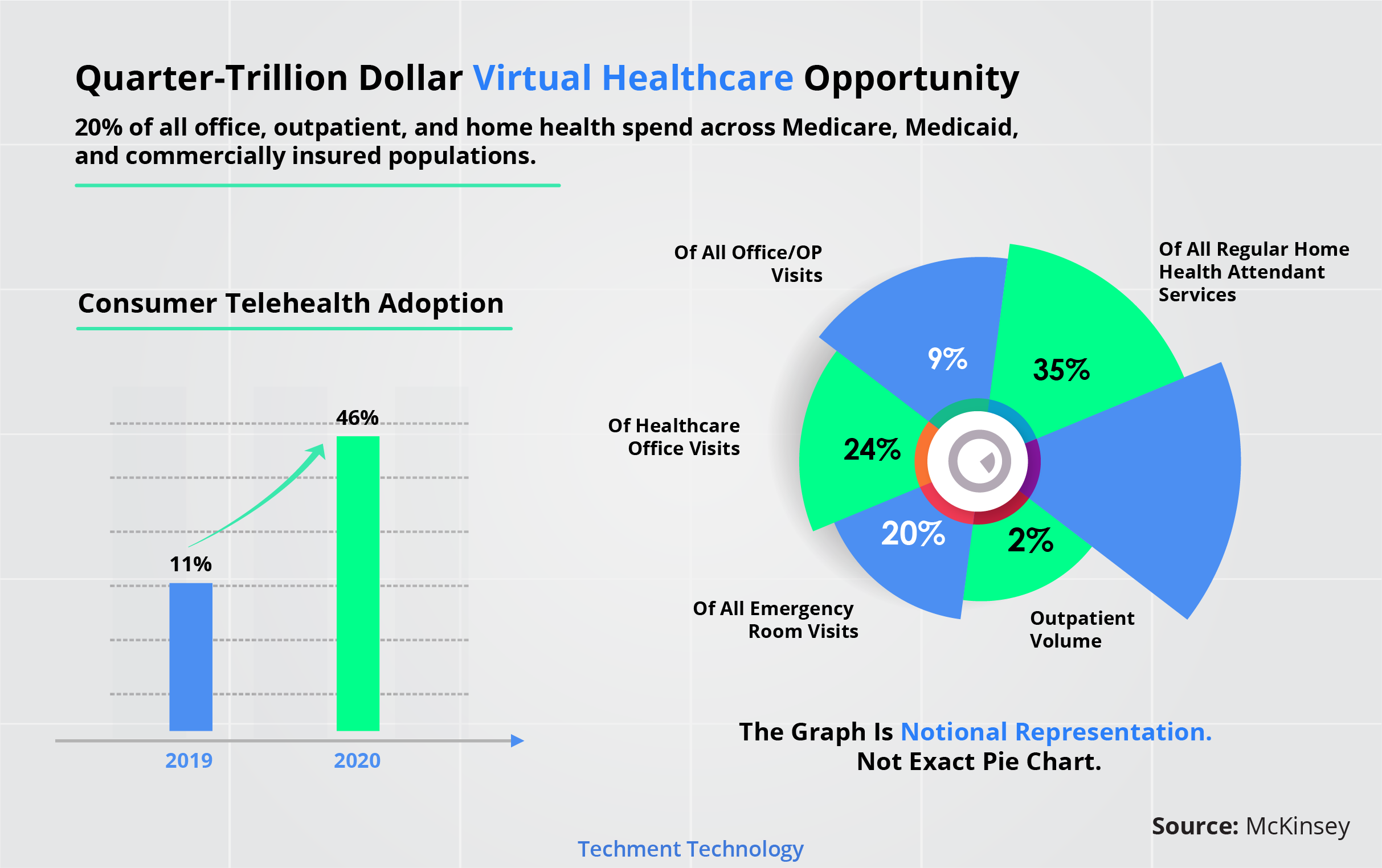The strong undercurrents in global healthcare are the most conspicuous they have ever been. The breathtaking transformation in healthcare has many underlying causes like advancements in technology, the pandemic, changes in regulations, increasing healthcare budgets, and more.
One such factor is the Institutional investments that have begun to silently cause structural shifts in healthcare’s evolution in more direct, proactive, and precise ways.
Generally, change and growth draw investments into a sector, but in healthcare, the case is a little different as investments are driving change. PE, VC, and hedge funds are consistently investing in this sector at highly impressive CAGRs that have triggered the beginning of the consolidation of several markets, such as ambulatory surgery, hospitalist staffing, and home health unlocking high value with digital and remote care solutions.
Massive Investments and the Cross Road
The tsunami of change triggered by the pandemic throws one thing out of the window – in action. Healthcare institutions have essentially two questions to answer –
- Would they be willing to change healthcare’s future alone or with institutional investors?
- How can they sustainably evolve their business models in tandem with change?
Institutional investment has accelerated in the last decade, with the number of deals growing consistently.

Such impressive growth and capital inflow come with concomitant expectations of time-bound Return on Invested Capital (ROIC). The expectation of return is forcing providers to look into the optimization of their operations and improvements in their services to remain competitive and performing.
The Change Driven by Institutional Investments
The total overall return of healthcare between 2012 and 2016 grew faster than the combined EBITDA of top 1000 US companies. The rising population of aging people and chronic disease patients are pushing for the demand for healthcare services, which in the US are expected to rise with a CAGR of 6% till 2025, while the economic growth trails behind.
Here is why investment in healthcare makes the most sense-
- Scale Up Opportunities: Only about 13% of total hospital admissions are handled by the top 5 health systems. Such is the scope for expansion and technology will play a vital role in helping these systems scale-up.
- The success of Innovative Business Models: Be it ambulatory care centers or digitization, today, things favor new models of care delivery
- Consumerism: Patients and people, in general, are now more price-sensitive and tech-savvy, and put greater emphasis on convenience. Consumer-centric healthcare will give rise to solutions around wellness and disease management.
- New Care Alternatives: The changing regulations, cost, and quality pressures, redesigned health plans, and other changes are preferring low-cost, alternative settings of care such as ambulatory surgery centers, post-acute home health, and other changes in business models such as outsourced hospital-based physicians (e.g., anesthesiologists and emergency physicians). Investment in these areas is rising, and mounting pressure on providers to change to better care delivery.

- Medical Management: Investors are not as operational savvy, and want to use the data to improve performance. Investments in medical management focus on population health analytics and direct ownership of the parts of the care continuum which has proved to be difficult in achieving success and requires business model transformation to unlock value, given reimbursement headwinds. Focus is on the reduction of medical waste, on data-driven services that might increase utilization and improve unit-cost management.
- Easy, Safe and Secure Payments: Of the $3.5 trillion flows through the US healthcare system, an increasing share of over $ 200 billion is made directly from consumers to providers. This segment will grow faster, highlighting the need for investments to focus on the digitization and standardization of both payers’ payment integrity and providers’ revenue cycle management.
The Investments Shaping Healthcare’s Evolution The inflow of capital from institutional investors will make possible the development of new business models.- HaaS (Health-as-a-service): Increasing consumerism is changing how healthcare should be delivered, with anticipation of customers’ needs, digital solutions, and consumer shopping are paramount.
- Effective Chronic Disease Management: Investments are counting on digital solutions and strategies and incentives to drive behavioral change by keeping patients, providers, and payers more intimately engaged with each other. MIoTs, automation, and analytics are essential for driving results, reducing cost, and improving access.
- Alternative, but Better Post-acute care: The need and desire for “aging in place” along with lower cost with effective home health and remote monitoring solutions are leading to innovative business models, as traditional ones no longer serve the purpose.
- Delivering Better Patient Experience: The focus on the patient is taking center stage, a move away from the service-centric care solutions. The solutions and investments are investing in the same line.
The Way Ahead – HealthTech
The investment patterns and momentum appear to gather more steam in the post-covid era.
The change led by institutional investments would work towards creating a patient, ROI, and innovation-friendly care ecosystem. Technology will play a central role as it is key in solving the iron triangle of healthcare – access, affordability, and care.
Technology-driven initiatives that investments are going to undertake would trigger business model innovations. Healthcare is about to change radically in terms of cost, quality, availability, personalization, and most significantly – the outcomes.
To read more about HealthTech – please – read our white paper.
 All Posts
All Posts


